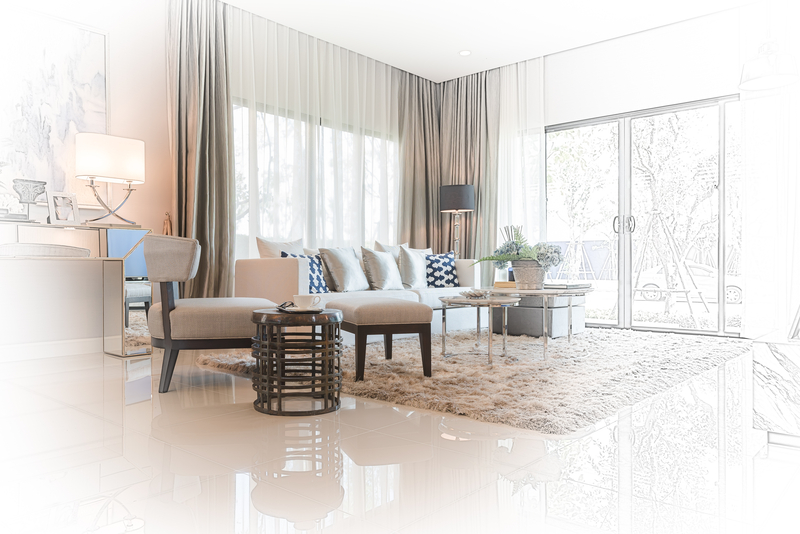
How to fix them? Experts weigh in on what to do.
Whether moving into a new home or simply redecorating, there’s no doubt you have every intention of maximizing the space, tapping into your personal aesthetic, and promoting good flow. Balancing all three can be tricky, but it will make your space feel more inviting. With expert interior designer help, here are the most common flow-disrupting mistakes people make and what to do instead.
Placing Furniture Along Every Wall
Arranging the bulk of your furniture against walls is a default move, but it can hinder the flow of your space. While some rooms may be more difficult to work with—such as those with multiple focal points, like a fireplace or massive window—you have options.
“Instead of pushing all your furniture against the walls, pick the focal point you use more frequently and forget the other,” advises Liz Caan, an interior designer based in Boston, Mass. “Try placing a dominant piece of furniture like a sofa in front of the focal point (for example, a large window) and treat it like a wall. Not only does it create ‘a moment’ within the space, but it also provides some architecture and visual interest.”
Pulling that accent chair out from the corner and further into the room is another option. So is positioning your bed at the center of the wall instead of tucking it into the far corner.
Creating Visual and Physical Obstacles
Interior design “obstacles” can be a physical hindrance or a visual eyesore. The rule of thumb is that it should feel easy to walk into a space.
“Take an office as an example,” says Kevin Dumais, an interior designer in New York City. “You want to avoid having your back to the entrance. Doing so leaves you feeling vulnerable and can even signal to visitors that they’re not welcome.”
If you position the desk to face the entrance, you’ll create a conversational area for you and others who walk in. Not possible? Hang a mirror on the wall over the desk so you can see the entrance, and others can see your face.
Extrapolating this advice to the rest of the home, your largest piece of living room furniture ought to face the entrance. All entryways (including those leading from one room to another or the front entrance of your home) should be free from physical blockades.
Not Getting the Scale Quite Right
Martyn Lawrence Bullard, a Los Angeles-based interior designer, says that one of the biggest culprits hindering flow is getting the scale wrong.
“Putting furniture that is too big or too small into a space can totally kill the feel,” he says. “Soft furnishings like a too-large sofa can ruin a room.”
Not only does it look “off” and make a space feel less inviting, but it can make it difficult to physically navigate the room. Furniture that’s too small can feel strange and won’t make the most of your space, either.
Caan also applies this advice to décor items like lighting or even artwork.
“You may have invested in a ‘status’ piece of art, but that doesn’t mean it belongs on the most prominent wall of your home floating in a sea of plaster,” she says. “Art should be appropriately scaled to the wall it is hung on. The goal is less about ‘showing off’ and more about a sense of place.”
Nailing scale requires a Goldilocks approach and takes some practice. Bullard recommends creating a blueprint (even if it’s just hand-drawn) before purchasing items.
Having Too Much or Too Little Light
One of the best things you can do for any space is to make the most of the natural light. Then supplement it with beautiful, welcoming artificial light.
“Having natural light in a space is a privilege. Treat it like gold and make sure to enjoy how the light changes throughout the day,” says Florida-based interior designer Deborah DiMare. “When possible, ensure living and gathering areas are close to a window. Exposure to nature, landscapes, and fresh air invites a sense of togetherness and brings that positive, grounded energy into our spaces.”
Aim to create layers of artificial light that make the most of your space once the sun begins setting. Dumais recommends following Richard Kelly’s theory of lighting.
“The theory says that every space should have three distinct types of lighting: focal glow, ambient luminescence, and play of brilliants,” says Dumais. “Focal glow can be a reading lamp or desk lamp, a picture light, or an accent light on artwork. Ambient light fills a space evenly. This can be achieved with floor lamps, a glowing pendant, or surface mount lights. Play of brilliants can be a sconce, a chandelier, or even candlelight. Something that sparks the imagination or excites the senses.”
Letting Clutter Take Over
From a pile of unkempt shoes near the door to a few-too-many keepsakes lining your mantle, clutter is a surefire way to disrupt the overall flow of your space.
“A cluttered home or office can lead to a cluttered mind. The more clean, tidy, and open the space feels, the more energy can flow,” says DiMare. “Every item you bring into your home should ‘speak’ to you and resonate with your inner energy. When reassessing items in your home, I recommend going through one room at a time and analyzing each item. Ask yourself whether it’s useful or if it makes you happy; decide accordingly and donate what you can.”
As for non-decor pieces of clutter, such as shoes, cords, and coats, try to conceal them or create designated spaces. A small tray on the coffee table can house remotes, an enclosed shoe rack or entry closet can contain coats and kicks, and a small, hidden entryway shelf can collect keys, sunglasses, and phones.
Wendy Rose Gould, Real Simple

